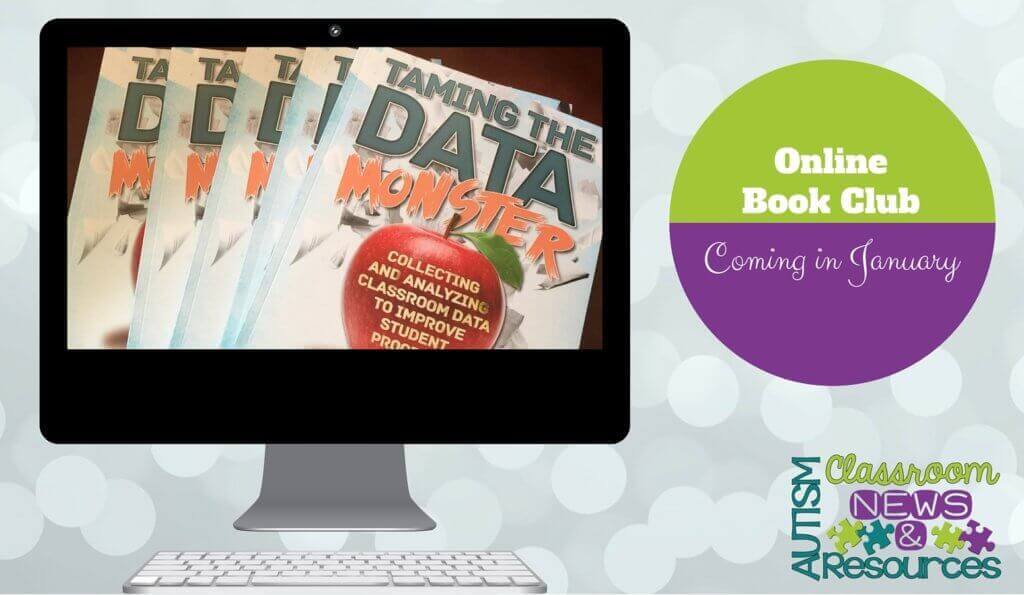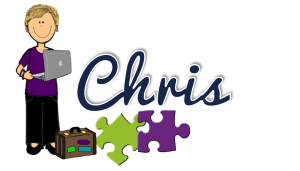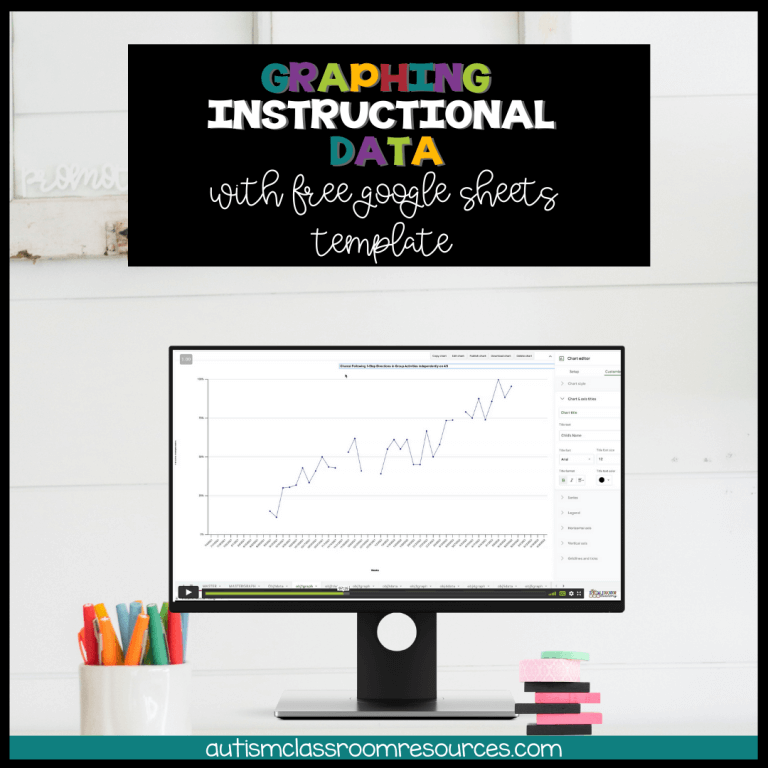 It’s here! It’s here!!! Finally!!! I am more excited about introducing this book than probably any other I have written because I think it is so badly needed. I mean…data collection?? I think it’s the area of the classroom that most of us struggle with more than anything else.
It’s here! It’s here!!! Finally!!! I am more excited about introducing this book than probably any other I have written because I think it is so badly needed. I mean…data collection?? I think it’s the area of the classroom that most of us struggle with more than anything else.
Do you ever ask any of the following questions?
- How much data do I need to take?
- What type of data do I need to take?
- How can I manage to take data and keep my class engaged at the same time?
- Do I have to take data on everything, everyday, all the time?
- How can I, the teacher, take all the data in the classroom? Do I have to?
- What do I do with the mountains of paper created by the data I’ve collected?
- What are the best tools to choose to take data with?
- and on and on…
These are questions I’ve heard for all of my years in the classroom. And along the way I’ve learned a few things that I want to share with you about these questions.
What I’ve Learned About Data
The first and most foremost thing I’ve learned is not surprising. There is no one universal data collection system that works for every teacher, every child, and every problem. OH, I wish there was!! Life would be so much easier. However, we all have different preferences in the way we take data and what our skills are. For instance, I have a good friend who can hold 3 counters of different colors and track 3 behaviors of 3 students simultaneously. If I try to do that, I forget which counter goes with which behavior and which student and end up screwing it up. I need the visual cues of paper and pencil.
So, this is not a one-size-fits-all model of data collection. Instead, this book shares cases and real-life examples of data collection strategies and gives you guidelines for making decisions about the questions above, like how much data you need and how to effectively analyze it to make it useful. There are lots of pictures and examples because, let’s face it, you don’t have to time to read all the research. So we took the research and put it together in what I hope will be a useful and easy to understand way to help YOU make decisions about YOUR data collection.
Skill Data and Behavior Data
So often we’ve found that when people are talking about data in the classroom they are only referring to data for functional behavior assessments or to track behavior. Or some are only talking about testing scores and RTI data, while some are talking about data for acquisition of skills. So in this book we broke it down and take each of these areas separately with focuses on skill data alone and behavior data alone because the tools are often similar but have some significant differences.
Data Forms–That You Can Download
Another question I get asked often is what data form people should use. This is another question that has many answers because one size doesn’t fit all. So, in this book we talk about systems of data collection in which you select forms that make sense for your situation. There are 3 case studies in the book focusing on an elementary self-contained teacher, a high school, transition / vocational teacher, and a general educator trying to figure out how to take data on his students who have special education services. We provide solutions for each of those cases and share with you how those decisions get made. As a reader of this blog, I think you find something familiar in at least one of the cases if not more than one.
And, in addition to showing how the forms work, we are sharing copies of our forms online to those who purchase the book so you can use them in your classroom. There is a link in the book where you can download them online and edit them to your needs, in most cases.
Guidelines for Data Analysis
We see lots of classrooms in which lots of data is collected but then the staff isn’t sure what to do with it. They aren’t sure how to analyze it and use it in a meaningful way. Data is only useful if it documents progress and gives you information to problem solve when progress isn’t being made. So, we set out to find research-based strategies for analyzing your data and we share those tools with you. The guidelines help determine how much data you need, when you need more data, what type of data you need in which situation, as well as what your data has to tell you about changing what you are doing (or not). This is one of my favorite aspects of the book because I think it’s something most of us were not taught and without the tools to make sense of the data, it’s just a pile of paper.
Book Club Coming in January
This book is designed to help you think through issues involving data collection in your classroom. However, as I mentioned above, there is no one-size-fits-all answer to the problem of data collection and analysis. So, I thought it would be fun to do an online book club in which we have a chance to problem solve together as you read through the book. This will give me an opportunity to answer questions and also the opportunity to get feedback and advice from each other.
I’ve decided to put off starting the book club until January because this is not the best time of year for trying new things or committing to new things. But, if you want your new year’s resolution to be taming the data monster, we will start just after the new year and go through the book systematically.
I will share more about the book club as the date gets closer, but here is what I am thinking so far.
- It will be free, though you will need to have a copy of the book to participate
- We will use a private Facebook group to post discussions and questions.
- I will divide the book up by weeks and share discussion questions to get us started, but any questions on the topic for that week will be welcome.
- I’m planning to do at least 2 face-to-face meetings with the group where I’m on camera answering questions that can be typed in from the group that will be open only to participants in the book club.
My hope is that the book club will give us the opportunity to really dig into the meat of data collection and allow me to help you with how to adapt it to your routines in your classrooms. I’m not sure yet whether there will be a cap to the number of people accepted but will let you know when I decide. If I do cap the number, those on my mailing list will be notified first–so if you haven’t already signed up for the newsletter, make sure you enter your email to subscribe in the bar at the top of the screen! (Getting the blog posts sent to you is not the same list as the newsletter, just FYI). If there is a cap and it all works out well the first time, there will probably be a second opportunity.
So, pencil us in for January to Tame the Data Monster! You can purchase the book now through AAPC Publishing by clicking HERE and through an Amazon Affiliate link by clicking HERE. The book just got to the publisher at the end of last week so orders are being filled with pre-orders, so it may take a bit of time for the copies to be back in stock at Amazon. I have found that they are pretty quick at getting them back in stock when they run out.
Finally, is anyone out there going to OCALICON2015? If so, I’ll be there! You will find me at our special education marketing booth with freebies and the book will be available for sale at the AAPC Publishing booth there! I’m doing a book signing on Thursday, November 19 along with my co-author, Susan Kabot, so please drop by one of the booths and say hi! I’d love to meet as many of you as I can!!
Until next time,









